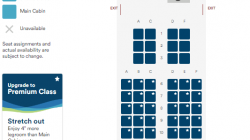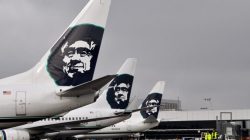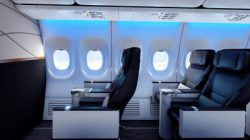Seattle-based Alaska Airlines is working to make “First Class flights better” with various upgrades over the coming months. The changes are intended to impact all stages of the customer journey lifecycle, including pre-flight activities such as meal orders taken in advance, all the way to in-flight WiFi.
Alaska is undergoing a merger with Virgin America, and the two carriers obtained a Single Operating Certificate (SOC) earlier this year. In late April 2018, the two airlines will combine to a single IT platform, or Passenger Services System (PSS), upon which the carriers will be considered, “fully integrated,” from a reservations and operations perspective. Certain nuances will remain different, however, such as cabin interiors from each respective airline, as well as crews operating specific routes. Those combinations, however, are expected to come over time.
The Alaska Airlines First Class and Virgin America First Class products are vastly different in their pre-merger states, from both a hard-and-soft perspective. Virgin America, for one, offers recliner-style First Class seats on its Airbus aircraft, arranged in two rows as a 2×2 configuration, whereas Alaska offers a greater number of seats, but with a smaller pitch, in its First Class cabin. From a soft product perspective, Alaska often does not offer a choice for its First Class passengers, whereas Virgin America does. Even upgrade policies are different between the two carriers: Virgin does not offer complimentary upgrades for its elite customers, whereas Alaska does.
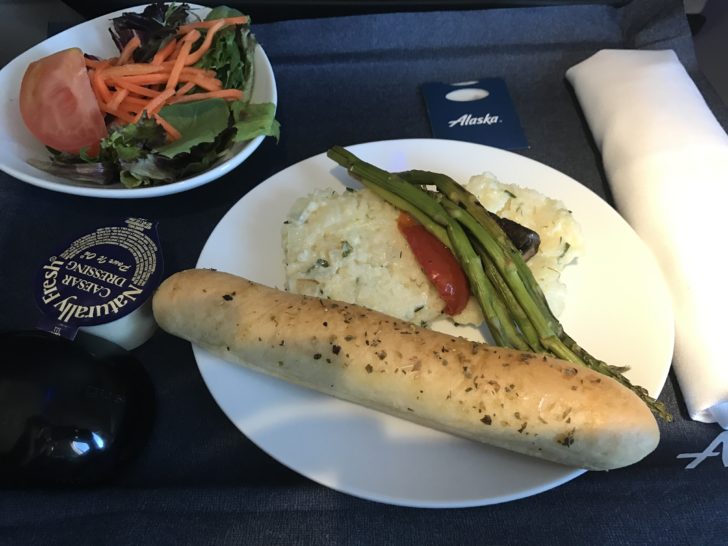
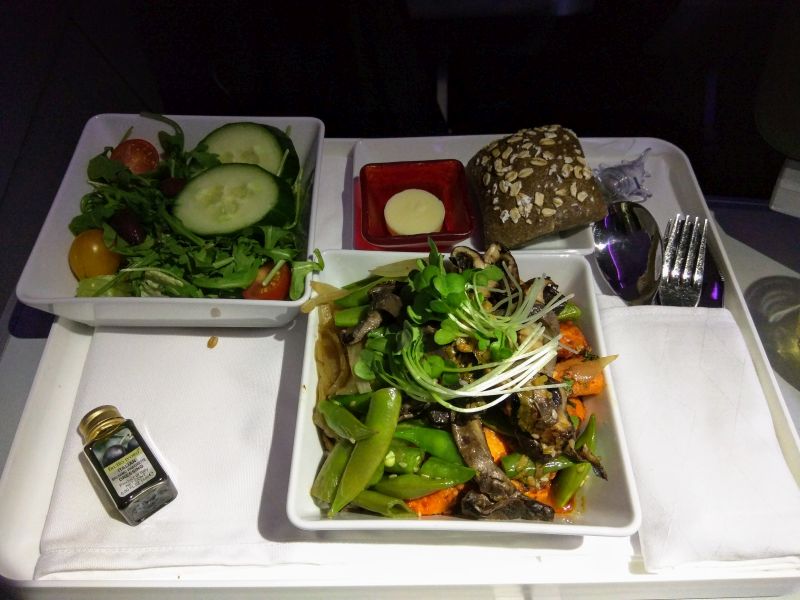
In an effort to streamline the products to feature blended attributes from both carriers, Alaska’s new First Class will have changes to the following customer touchpoints:
- Catering: new seasonal menus, featuring local delights from the west coast (food and beverage), including new dishware, and the ability to pre-order meals (available today)
- Seats: custom seats and interiors
- Lounges: “Re-imagined”
- WiFi
New Catering Changes on Alaska Flights
In First Class, Alaska serves meals in all three dining windows on flights over 675 miles departing between 5 AM and 8 PM. Fresh snacks are offered on all flights over 250 miles. On its website, Alaska has provided some sample menus of new items that customers can expect to try on future flights, such as:
- A breakfast protein plate with coconut-mango overnight oats, Greek yogurt, hard-boiled egg, grapes, orange segments, baby carrots, strawberries, and grilled pita bread
- Mexican Street Fruit plate with watermelon, pineapple, cucumber, and mango seasoned with chili-lime salt
- Espresso-rubbed beef shoulder braised in chipotle paste, dark rum, balsamic vinegar, and fresh herbs
- Breakfast smoothie shots, Teavana leaf teas, and Starbucks coffee
Some of these snack items appear to be similar to some of the buy-on-board products that Virgin America currently offers in the Main Cabin, such as the Protein Power Plate.

Alaska has also extended First Class Pre-Select, also known as its pre-order meal service, which was introduced last year, to over 100 daily flights. The meal service reservations can be made anywhere between two weeks and up to 24 hours prior to departure time, using the Alaska Airlines mobile app. First Class Pre-Select is currently offered on all cross-country and Hawaii flights, but Alaska hopes to expand it to all flights by early 2019.

Currently, most Alaska Airlines flights do not offer a choice in First Class. With these changes, there will now be a choice, with one vegetarian option.
Seats
Alaska is re-configuring its First Class seats with a custom-designed Recaro leather seat product. Each seat will have power outlets, footrests, tablet holders, cup holders, and 40″ of seat pitch. The changes are expected to debut this fall, and half of the mainline fleet is expected to be retrofitted by the end of 2019.
The carrier will also add quilted throws, starting this spring, and enhanced entertainment tablets in their First Class cabins.
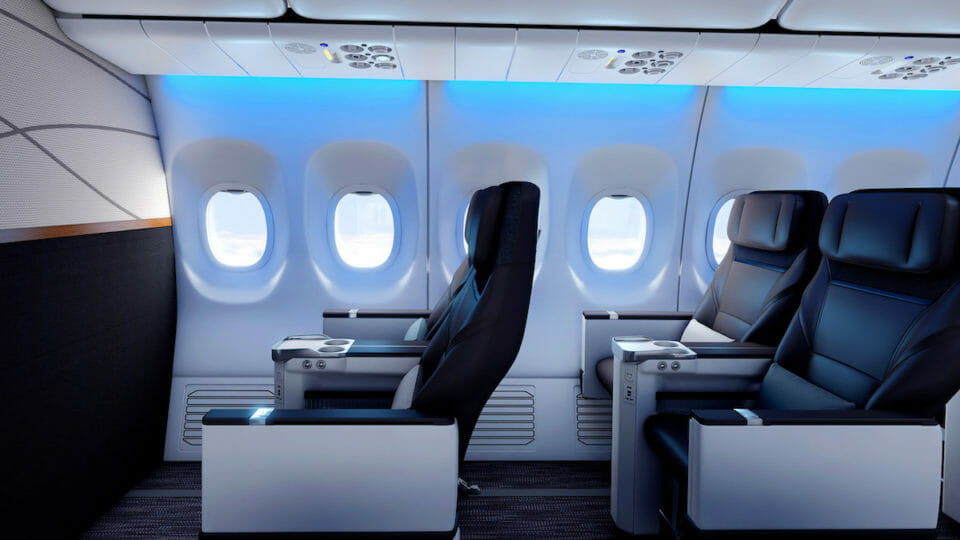
Lounges
Alaska currently has six lounges across its stations. Three are located in its Seattle/Tacoma hub, in Concourse C, Concourse D, and the North Satellite terminal, and the remaining three are located in Anchorage, Portland, and Los Angeles. Alaska has partnerships with other lounges in various cities/airports, depending on the class of service traveled that day or membership type for its travelers.
Alaska lounges, which were formally called, “Board Rooms,” offer pancakes for breakfast, as well as soups, salads, and a “variety of snacks,” throughout the day. There are also complimentary beverages, including wine, beer, and liquor, along with free wifi, quiet workstations, conference rooms, and concierge service.
There is a seventh lounge opening up at New York JFK next month, which will be located in Terminal 7, where both Virgin and Alaska are currently housed. It is also in the process of re-vamping the Concourse C lounge at SeaTac, which can be viewed on a video here, which will be its Flagship Lounge when it opens in 2019.
WiFi and Entertainment
Alaska offers Gogo Inflight Internet on all of its Boeing 737s and Embraer 175s, while Virgin America also offers Gogo Wifi on all of its Airbus aircraft as well. In August 2017, Alaska announced that it will install Gogo’s 2KU satellite-based service on all Boeing and Airbus aircraft starting this year. This is a huge improvement over the Gogo ATG and ATG4 services that Alaska offers on its flights, as it will deliver up to 70 megabits per second to the aircraft (nearly 20x as fast as Gogo’s original ATG service).
It will also be usable from gate-to-gate, rather than above 10,000 feet, and allow customers to download streaming media such as Hulu, Netflix, and HBO Go. Alaska anticipates there will be 40-50 planes configured with these changes by the end of the year, the entire fleet will be satellite-WiFi equipped by early 2020. Regional jets on Horizon Air and SkyWest will continue to use the Gogo ATG4 internet service.
WiFi coverage on Alaska’s flight network is currently restricted to the lower-48 United States, most of southern Canada, and most of Southern Alaska. Hawaii and Mexico are not part of the coverage areas.
All customers on Alaska flights can enjoy free in-flight testing with Free Chat on Alaska flights, which enables them to use iMessage, WhatsApp, or Facebook Messenger, at no cost.
Alaska currently offers its Beyond Entertainment programming on flights over 3.5 hours to customers who are using a Wi-Fi enabled computer, tablet, or smartphone. The in-flight entertainment tablets are available for rent for customers who do not have such devices and are pre-loaded with the newest movies, tv shows, games, and digital magazines. These devices are offered for free in First Class, or for MVP Gold 75K customers in the Main Cabin.
Alaska First Class Enhancements: Bottom Line
Alaska’s service enhancements are long overdue for an airline that is vying for customers in a fiercely competitive market on the U.S. West Coast, as well as on transcontinental flights. Alaska will be the only major U.S. carrier that does not offer a lie-flat seat in First Class on flights between the East and West Coasts, which is something that JetBlue, American, Delta, and United have been offering for several years, if not decades. At the very least, comfortable seats, increased pitch, and extended meal choices are necessary upgrades.
The satellite WiFi connectivity will be a decent competitive advantage for them, and adding lounges in New York will also be a welcomed addition. However, it is critical for Alaska to invest in a San Francisco lounge as well, which they closed recently, in order to offer a lounge experience across its primary West Coast focus cities.


